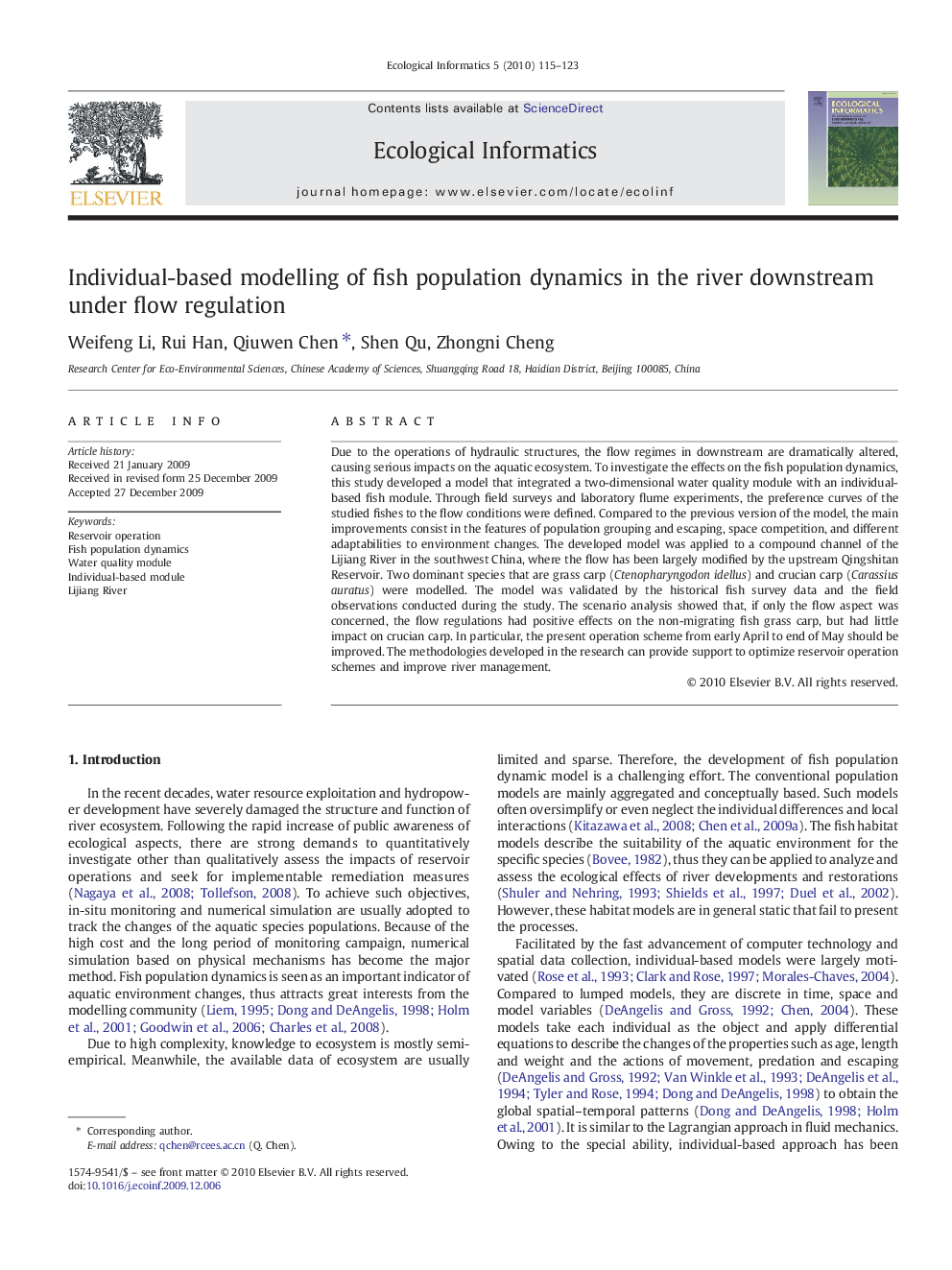| Article ID | Journal | Published Year | Pages | File Type |
|---|---|---|---|---|
| 4375341 | Ecological Informatics | 2010 | 9 Pages |
Abstract
Due to the operations of hydraulic structures, the flow regimes in downstream are dramatically altered, causing serious impacts on the aquatic ecosystem. To investigate the effects on the fish population dynamics, this study developed a model that integrated a two-dimensional water quality module with an individual-based fish module. Through field surveys and laboratory flume experiments, the preference curves of the studied fishes to the flow conditions were defined. Compared to the previous version of the model, the main improvements consist in the features of population grouping and escaping, space competition, and different adaptabilities to environment changes. The developed model was applied to a compound channel of the Lijiang River in the southwest China, where the flow has been largely modified by the upstream Qingshitan Reservoir. Two dominant species that are grass carp (Ctenopharyngodon idellus) and crucian carp (Carassius auratus) were modelled. The model was validated by the historical fish survey data and the field observations conducted during the study. The scenario analysis showed that, if only the flow aspect was concerned, the flow regulations had positive effects on the non-migrating fish grass carp, but had little impact on crucian carp. In particular, the present operation scheme from early April to end of May should be improved. The methodologies developed in the research can provide support to optimize reservoir operation schemes and improve river management.
Related Topics
Life Sciences
Agricultural and Biological Sciences
Ecology, Evolution, Behavior and Systematics
Authors
Weifeng Li, Rui Han, Qiuwen Chen, Shen Qu, Zhongni Cheng,
